I have 14 .csv files (1 .csv file per location) that will be used to make a 14 bar plots of daily rainfall. The following code is an example of what one bar plot will look like.
import numpy as np
import pandas as pd
from datetime import datetime, time, date
import matplotlib.pyplot as plt
# Import data
dat = pd.read_csv('a.csv')
df0 = dat.loc[:, ['TimeStamp', 'RF']]
# Change time format
df0["time"] = pd.to_datetime(df0["TimeStamp"])
df0["day"] = df0['time'].map(lambda x: x.day)
df0["month"] = df0['time'].map(lambda x: x.month)
df0["year"] = df0['time'].map(lambda x: x.year)
df0.to_csv("a2.csv", na_rep="0") # write to csv
# Combine for daily rainfall
df1 = pd.read_csv('a2.csv', encoding='latin-1',
usecols=['day', 'month', 'year', 'RF', 'TimeStamp'])
df2 = df1.groupby(['day', 'month', 'year'], as_index=False).sum()
df2.to_csv("a3.csv", na_rep="0", header=None) # write to csv
# parse date
df3 = pd.read_csv("a3.csv", header=None, index_col='datetime',
parse_dates={'datetime': [1,2,3]},
date_parser=lambda x: pd.datetime.strptime(x, '%d %m %Y'))
def dt_parse(date_string):
dt = pd.datetime.strptime(date_string, '%d %m %Y')
return dt
# sort datetime
df4 = df3.sort()
final = df4.reset_index()
# rename columns
final.columns = ['date', 'bleh', 'rf']
final[['date','rf']].plot()
plt.suptitle('Rain 2015-2016', fontsize=20)
plt.xlabel('Date', fontsize=18)
plt.ylabel('Rain / mm', fontsize=16)
plt.savefig('a.jpg')
plt.show()
And the final plot looks like this:

How can I automate this code (i.e. write a for-loop perhaps?) so that I don't have to re-type the code for each .csv file? It would be nice if the code also saves the figure with the name of the .csv as the name of the .jpg file.
The names of the 14 files are as such: names = ["a.csv","b.csv", "c.csv","d.csv","e.csv","f.csv"...]
Here's an example of the type of file that I'm working with: https://dl.dropboxusercontent.com/u/45095175/test.csv